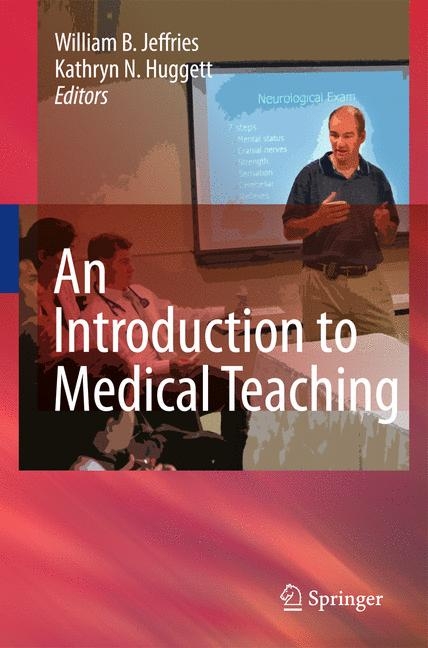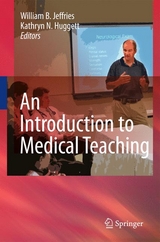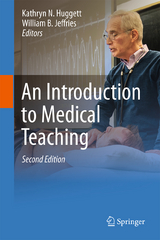Few faculty members in academic medical centres are formally prepared for their roles as teachers. This work is an introductory text designed to provide medical teachers with the core concepts of effective teaching practice and information about innovations for curriculum design, delivery, and assessment. It offers brief, focused chapters with content that is easily assimilated by the reader. Topics are relevant to basic science and clinical teachers, and the work does not presume readers possess prerequisite knowledge of education theory or instructional design. The authors emphasize application of concepts to teaching practice. Topics include: Helping Students Learn; Teaching Large Groups; Teaching in Small Groups; Problem Based Learning; Team-Based Learning, Teaching Clinical Skills; Teaching with Simulation; Teaching with Practicals and Labs; Teaching with Technological Tools; Designing a Course; Assessing Student Performance; Documenting the Trajectory of your Teaching and Teaching as Scholarship. Chapters were written by leaders in medical education and research who draw upon extensive professional experience and the literature on best practices in education.
Although designed for teachers, the work reflects a learner-centred perspective and emphasizes outcomes for student learning. The book is accessible and visually interesting, and the work contains information that is current, but not time-sensitive. The work includes recommendations for additional reading and an appendix with resources for medical education.
PREFACE 1. FACILITATING STUDENT LEARNING; Kristi J. Ferguson Key terms Role of learners Role of the teacher Role of learning activities Role of feedback and assessment The learning environment Take home points References For further reading 2. TEACHING LARGE GROUPS; William B. Jeffries Creating an environment that supports learning Developing a large group presentation Presenting a large group session Active learning methods in the lecture hall A final word References 3. TEACHING IN SMALL GROUPS; Kathryn N. Huggett Reasons for teaching in small groups Definition of small group teaching Preparing for the small group session Leading the small group session Small group discussion methods Variations in small group teaching Small group teaching and technology Evaluation of small group participation and learning Evaluation of small group teaching References For further reading 4. PROBLEM-BASED LEARNING; Mark A. Albanese Definition of problem-based learning Introducing PBL into the curriculum Curriculum and course design Summary References 5. TEAM-BASED LEARNING; Kathryn K. McMahon TBL fundamentals TBL stages Essential TBL principles References 6. TEACHING CLINICAL SKILLS; Janet M. Riddle Planning for teaching clinical skills Teaching during the clinical encounter The third phase of clinical teaching - reflecting on clinical experiences Summary For further reading 7. TEACHING WITH SIMULATION; Susan J. Pasquale What is simulation? What are medical simulators? Why teach with simulation: the benefits Key principles for teaching and learning with simulation Building a scenario Components of an effective simulation session Debriefing & fundamentals for doing it effectively Faculty development considerations Summary References For further reading 8. TEACHING WITH PRACTICALS AND LABS; Travis P. Webb et al. Benefits of laboratory teaching Examples of laboratory teaching Developing goals and objectives for laboratory teaching Assessment of laboratory teaching exercises How to set-up a lab exercise Summary References 9. TEACHING WITH TECHNOLOGICAL TOOLS; David A. Cook Fundamental principles Computer-assisted learning PowerPoint Audience response systems Video Other educational technologies and conclusions References 10. DESIGNING A COURSE; Christopher B. Reznich First steps: needs assessment and feasibility Designing the 'big picture' of your course Designing your course units Final notes References For further reading 11. ASSESSING STUDENT PERFORMANCE; Brian Mavis Reasons for assessing student performance Learning the language of assessment: a few definitions Key features of student assessment methods Choosing an assessment method Methods of student assessment Extended-matching questions Essays and modified essay questions Short answer questions Faculty global ratings Faculty checklist ratings Oral examinations Standardized patients and OSCEs Technology-based simulations Peer assessments Self-assessments Portfolios Reporting and feedback References For further reading 12. DOCUMENTING THE TRAJECTORY OF YOUR TEACHING; Nicole K. Roberts Portfolios Evaluation of teaching Levels of outcomes measured in evaluation Summing up References For further reading 13. TEACHING AS SCHOLARSHIP; Deborah Simpson & M. Brownell
| Zusatzinfo | biography |
|---|---|
| Verlagsort | Dordrecht |
| Sprache | englisch |
| Maße | 156 x 234 mm |
| Gewicht | 485 g |
| Themenwelt | Medizin / Pharmazie ► Medizinische Fachgebiete ► Medizinethik |
| Sozialwissenschaften ► Pädagogik ► Erwachsenenbildung | |
| ISBN-10 | 90-481-3640-7 / 9048136407 |
| ISBN-13 | 978-90-481-3640-7 / 9789048136407 |
| Zustand | Neuware |
| Haben Sie eine Frage zum Produkt? |
aus dem Bereich





